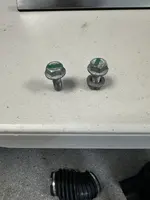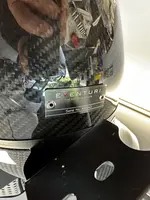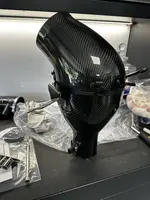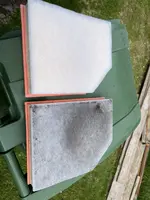I was skeptical of the claims, but your independent dyno pulls back it up. Does anyone have knowledge of how much gain is based on the design of the intake vs. reduced restriction of their chosen filter material?
I put these pics in some other thread somewhere, but I'll post them again in here.
Here's the stock air filter, which has a gauze pad on the side that faces the intake on the side of the car. That has to be fairly restrictive.
Here's the stock intake looking at it from above. The red arrows show the flow path starting from the bottom, which is from the side of the car.
The small arrow in the middle is where the air filter sits. The flow path is not straight. Air does not like to turn corners, and loses its velocity quickly. After it makes its twists and turns, it heads out past the MAF which sits in that rectangle opening (you take it out and put it in the Eventuri). Then the air goes into the silicone connecting tube, which has deep ridges inside for the air to chop and bump over.
You can see how the tube twists as it's coming up from the corner of the factory airbox.
The Eventuri is a tubular, straight-through flow design. Here you're looking at the exit (the MAF goes where the two silver bolts above the exit are) that goes into the silicone tube that connects to the supercharger.
I thought I'd taken a picture of the inside of the Eventuri silicone tube but I didn't. It's completely smooth inside; no ridges or bumps.
It's not just the filter element. The Eventuri focuses and channels the airflow so more air gets into the supercharger faster. A less restrictive air filter in the stock airbox is probably going to make
some difference, but it still has that disruptive path to go through. It's not going to make as much difference as the Eventuri system.











